Surprising fact: the difference between the shortest and longest days in Ireland can exceed 16 hours, which reshapes how you plan drives, hikes, and sightseeing.
I’ll set you up with a clear, future-focused game plan so you can maximize daylight, comfort, and value on your trip. I write from the perspective of someone helping travelers from the United States plan a flexible, weather-savvy itinerary.
My top picks—May, September, and October—blend mild weather, long daylight, and fewer crowds. Summer still delivers the warmest weather and the longest days, but it brings peak prices and heavy footfall at sites like the Ring of Kerry and Cliffs of Moher.
Budget months such as January, February, and November cut prices and crowds, though days are shorter and some attractions may be closed. I’ll show typical monthly temps and daylight ranges so you can pick months that match your priorities.
Key Takeaways
- I recommend May, September, and October for the best balance of weather, daylight, and lower crowds.
- Summer offers the longest days and warmest temps but higher prices and crowds.
- January, February, and November are the most budget-friendly months.
- Average temps run from about 2–3°C in winter up to 18–19°C in summer.
- Daylight swings dramatically—plan scenic drives for long summer evenings or tighter winter schedules.
- For a detailed month-by-month breakdown, see my linked guide on when to travel.
How I Decide the Best Time to Visit Ireland for an Unforgettable Trip
I lean on four simple metrics when I pick an ideal month: weather, daylight, prices, and crowds.
What you care about most: weather, daylight, prices, and crowds
I weigh those four factors first because they shape how many places I can comfortably cover each day. Good weather and long daylight mean more scenic drives and late coastal walks.
I compare typical patterns across the year so you pack layers and waterproofs, and so you can adapt if a blustery front rolls in.
My quick answer for future trips: May, September, and October
May, September, and October often hit the sweet spot — mild weather, long daylight windows, and kinder prices without peak crowds. Think May sunrise ~05:17 and sunset ~21:26, or September ~06:33–20:15. Those hours make road trips and coastal viewpoints more rewarding.
“Shoulder months give you the most travel value.”
- I map how prices shift from shoulder to peak so you save on flights and hotels.
- I note when popular viewpoints feel peaceful versus packed, and I plan routes accordingly.
- I match trip length to realistic hours of light so you get the most from each day.
Quick verdict: for a balanced trip I point friends toward September–October or May as the smartest windows for a future plan.
best time to visit ireland: My Verdict and Why It Might Differ for You
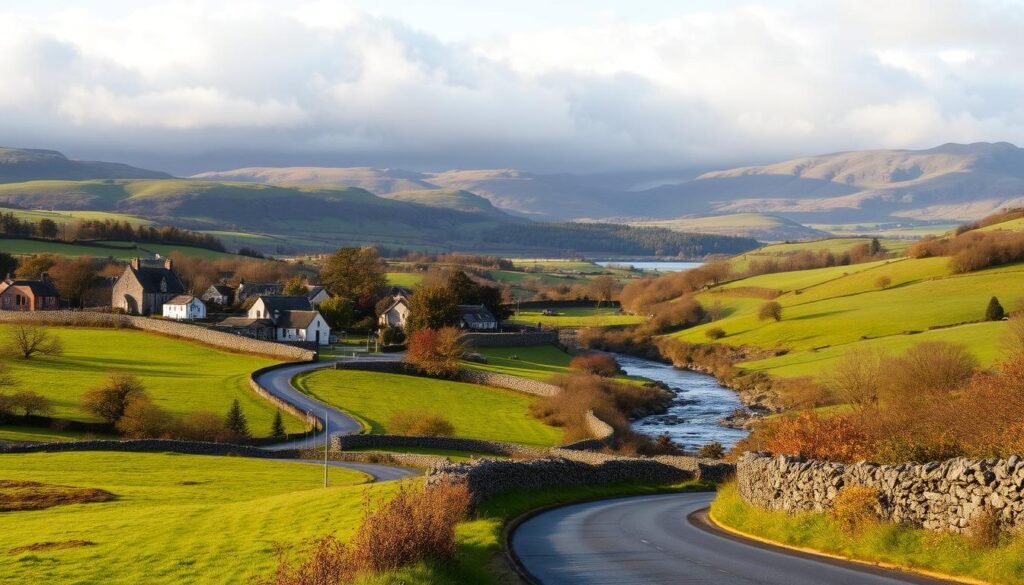
I pick months that let me use long daylight and avoid frantic crowds. For most travelers I favor the shoulder season—May, September, and October—because they offer mild weather and roomy viewpoints without peak chaos.
Why I love the shoulder season sweet spot
Shoulder months give long evenings and better rates. I find quality stays and rental cars are easier to book, and popular sites feel relaxed.
When peak season makes sense—and when it doesn’t
Peak season (June–August) delivers the warmest days and longest light. I pick it when outdoor plans need reliable warmth, but I accept higher prices and denser crowds.
“Shoulder months let you see more, pay less, and enjoy the scene.”
- I advise sunrise starts or later-evening visits to dodge crowds at the Cliffs of Moher and the Ring of Kerry.
- If you are visiting ireland with kids during school breaks, plan just outside peak windows for the best balance.
| Season | Pros | Trade-offs |
|---|---|---|
| Shoulder (May, Sep–Oct) | Mild weather, long light, lower prices | Occasional rain, some shorter festival schedules |
| Peak (Jun–Aug) | Warmest weather, max daylight | Higher prices, big crowds at hotspots |
| Winter (Dec–Feb) | Lowest prices, quiet towns | Short days, some closures, colder weather |
For a deeper month-by-month look, check my linked guide on what is the best month and match your tolerance for people, prices, and weather to find a trip that feels tailored.
Seasons in Ireland: What Each Time of Year Really Feels Like
Each season brings a distinct mood across the countryside and cities, and I’ll walk you through what each one actually feels like on the ground.
Spring (March–May)
I find spring lively but calm. Fewer travelers arrive, the countryside turns bright green, and wildflowers and baby lambs are everywhere.
Hiking and cycling are great; expect cooler weather and occasional rain that keeps views fresh.
Summer (June–August)
Summer gives the longest days — roughly 16–18 hours — and reliable sun with highs near 68°F.
I plan big road days and late-evening viewpoints, knowing crowds rise and prices climb.
Fall (September–November)
Fall brings harvest festivals, crisp air, and rich colors.
Temps average about 54°F with lows near 41°F. November can be the wettest month, so I add indoor stops when needed.
Winter (December–February)
Winter months offer festive markets, quiet streets, and lower prices.
Days are short, highs near 46°F, and evenings feel cozy in pubs and museums. In the north, you might even glimpse the Northern Lights on a clear night.
“I tune plans to the season’s daylight and weather so each day feels full and doable.”
| Season | Typical conditions | Why I like it |
|---|---|---|
| Spring | Cooler, green, showers | Great for hikes and fewer people |
| Summer | Warm, long days, sun | Best daylight for road trips |
| Fall | Mild, colorful, some rain | Festivals and calm towns |
| Winter | Short days, chilly, quiet | Markets, low prices, cozy nights |
Month-by-Month Highlights: Weather, Daylight, Crowds, and Prices
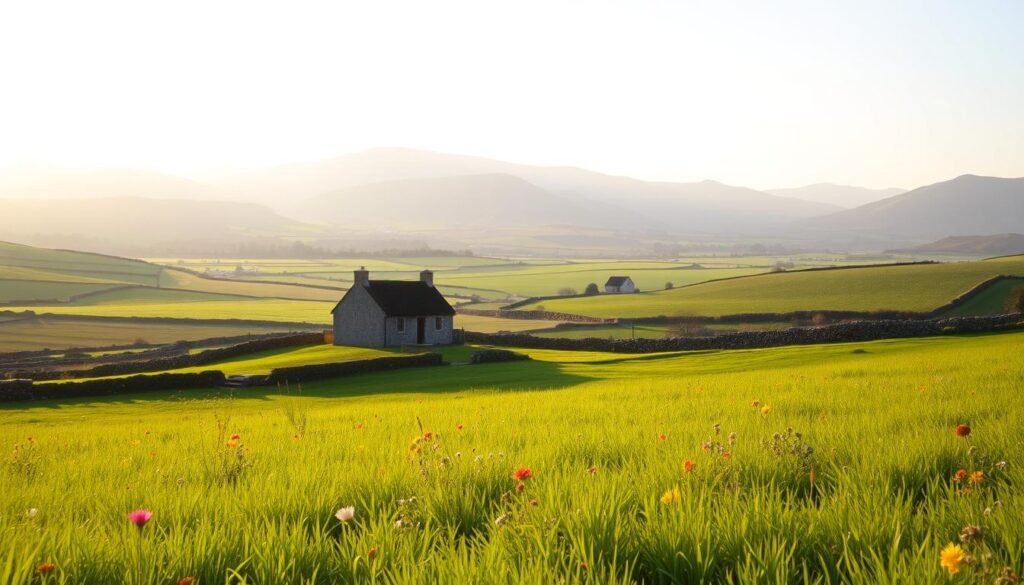
This quick monthly snapshot links typical weather and daylight with crowd levels and price swings so you can plan smarter.
March
Highs near 10°C (50°F) with days roughly 07:12–18:17. St. Patrick’s lifts crowds andprices. I book early and keep indoor options ready for changeableweather.
May
Mean temps about 9–13°C (48–55°F). Sunrise ~05:17 and sunset ~21:26. Shoulder season perks: long evenings, mildweather, and lively festivals—though near-peakpricespop up in popular towns.
July
Highs near 19°C (66°F) with sunrise ~05:01 and sunset ~21:56. You get the mostsunand longdays, but accept peak seasoncrowdsand top-tierprices. I start early and pre-book sights.
September
Highs about 13–16°C (55–61°F). Sunrise ~06:33, sunset ~20:15. Fewercrowds, pleasant temps, and better value on flights and stays.
December
Avg ~5°C (41°F) with sunrise ~08:16 and sunset ~16:10. Festive lights and markets shine. I favor cozy pub evenings and plan indoor stops on crisp, shortdays. Note school holiday spikes that affect availability.
| Month | Typical temps | Daylight | Crowds / Prices |
|---|---|---|---|
| March | ~10°C / 50°F | 07:12–18:17 | High (festivals) / higher prices |
| May | 9–13°C / 48–55°F | 05:17–21:26 | Moderate crowds / near-peak prices |
| July | ~19°C / 66°F | 05:01–21:56 | Peak crowds / peak prices |
| September | 13–16°C / 55–61°F | 06:33–20:15 | Lower crowds / better value |
| December | ~5°C / 41°F | 08:16–16:10 | Festive, quieter attractions / flight spikes |
Key Planning Factors: Weather, Rainfall, Daylight, and Peak Season
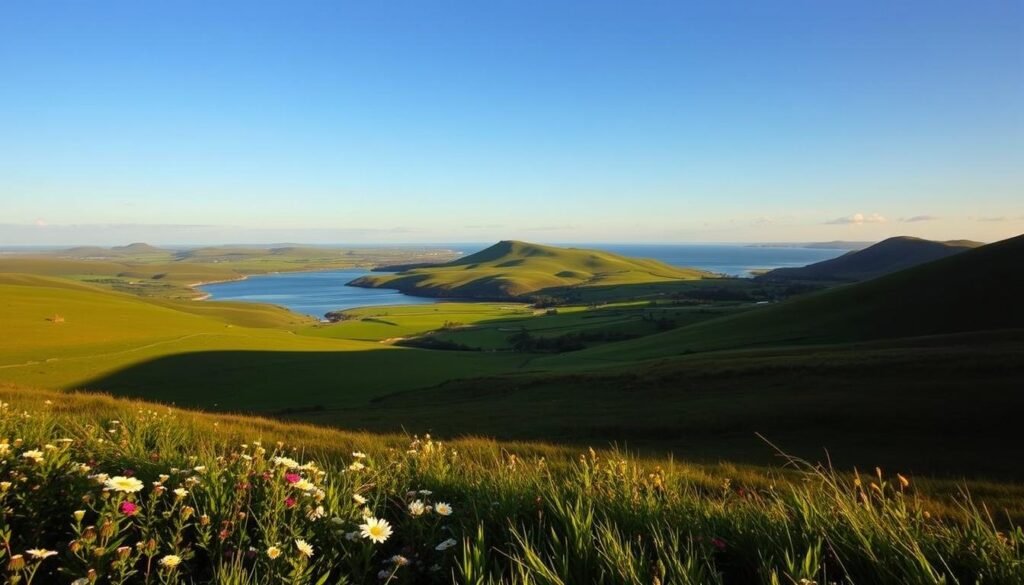
Picking the right window and packing smart will change how much you enjoy each day on the road.
I translate seasonal averages into practical advice so you feel comfortable on hikes, cliffs, and coastal drives. Average temperatures run: Mar–May highs ~54°F / lows ~43°F; Jun–Aug highs ~66°F / lows ~52°F; Sep–Nov highs ~55°F / lows ~48°F; Dec–Feb highs ~46°F / lows ~39°F.
Rainfall shows up often, especially in November. I pack a lightweight shell, a warm mid-layer, quick-dry pants, and grippy waterproof shoes. That system keeps you moving when a wet spell arrives and saves space in your bag.
Daylight and how I use it
Summer delivers about 16–18 daylight hours, perfect for long coastal routes and late viewpoints. Winter days are short, so I cluster indoor museums and pubs into the late afternoon when light fades.
Peak, shoulder, and winter: crowds and prices
Peak season brings higher flight and hotel prices and heavier crowds. Shoulder months and winter cut prices and often make popular sites feel calm without losing the highlights.
| Factor | What I feel on the ground | My practical tip |
|---|---|---|
| Average temperatures | Range from ~39°F–66°F across seasons | Layer for variable temps: base, mid, shell |
| Rainfall | Frequent; November is often wettest | Waterproof shoes + compact umbrella |
| Daylight hours | 16–18 hrs in summer; much shorter in winter | Plan outdoor highlights for long days; indoor clusters on short ones |
| Prices & crowds | Peak = higher prices and crowds; shoulder/winter = savings | Book key tickets in peak; travel shoulder for value |
“A flexible itinerary and the right layers keep your plans steady, no matter the weather.”
What You’ll Do Changes by Time of Year: Cities, Countryside, and Events
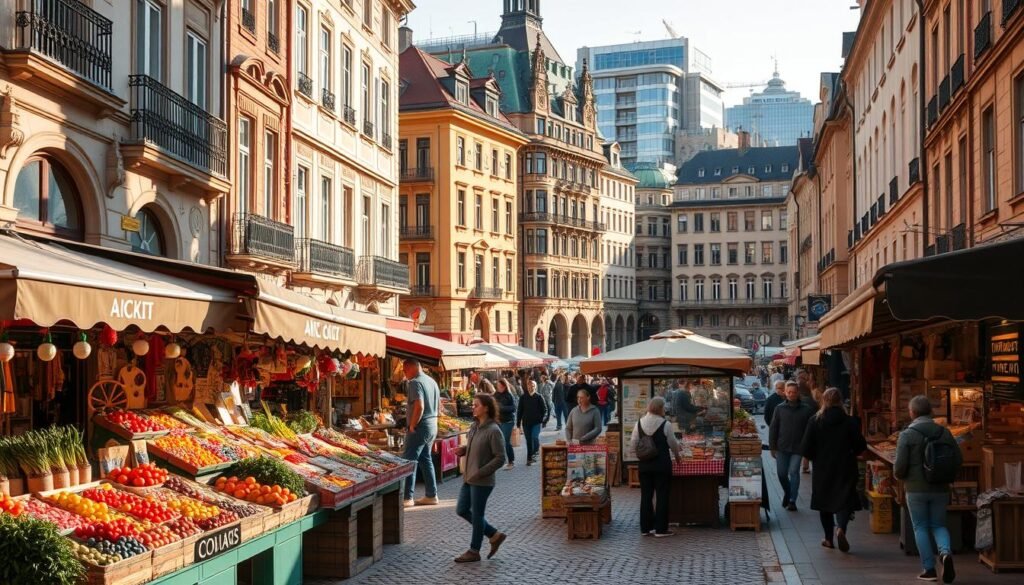
How you spend your days in Ireland shifts with the calendar—city breaks, coastal loops, and festivals each demand different pacing.
Cities and markets in chill months
In fall and winter I focus on cities. Dublin’s museums and Galway’s arts scene feel lively even in cool evenings.
Cork’s food markets and Belfast’s history tours are great when streets are calm and festive lights glow.
Countryside and coastal routes in warmer months
Spring calls for hikes on the Wicklow Way and coastal rambles as fields bloom. I time walks for long sun in summer.
Summer gives long sun-filled days for seaside drives and World Heritage places like the Cliffs of Moher.
Seasonal experiences and local culture
I plan trips around Halloween events, harvest fairs, and christmas markets so your trip captures local rhythm.
For winter months I add dark-sky stargazing in the north and cozy pub stops after a cold night.
“Combine a few cities with a scenic peninsula and you get a balanced trip that fits school calendars and avoids rushes.”
| Season | Focus | Typical highlights |
|---|---|---|
| Fall / Winter | Cities, markets, museums | Christmas markets, food tours, evening strolls |
| Spring | Countryside, hikes | Wildflowers, Wicklow Way, cycling |
| Summer | Coast, long drives | Sunlit beaches, World Heritage sites, timed stops |
Conclusion
I wrap up with a short, practical verdict that helps you pick months that match your priorities.
My quick call: aim for May, September, or October for long days, mild weather, and fewer crowds. If you want maximum daylight and warmth, summer wins—accept higher prices and big crowds. For lower costs, January, February, and November cut rates but bring shorter days and some closures.
Next steps: lock flights and key stays early, pack layers and a waterproof shell, and plan outdoor highlights for long daylight windows while saving indoor stops for short ones.
When in doubt, choose the shoulder season—especially September and October—for the best balance of weather, crowds, and value for your trip.


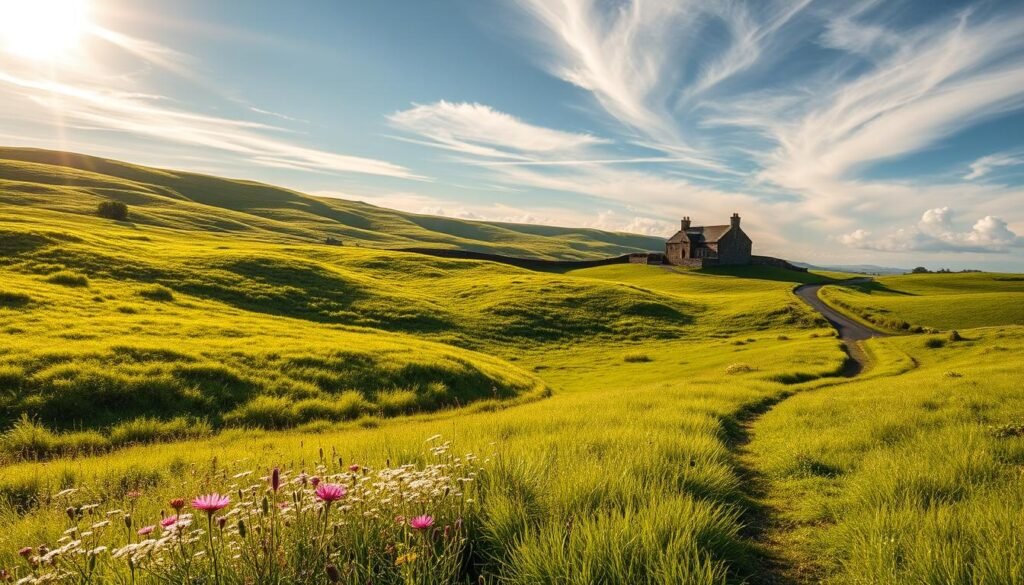



















One Response